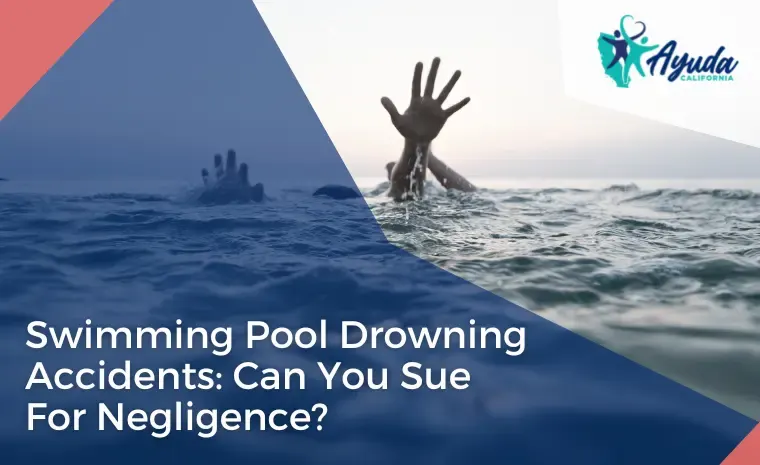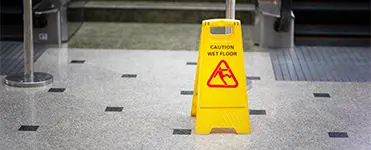Drowning is a leading cause of accidental injury-related death among children, and it happens more often than you might think. In the United States, nine people drown every day. And for each death, there are up to four non-fatal incidents that require hospitalization. Most child drownings occur when the child is being supervised at a swimming pool.
Is It Possible to Sue For a Drowning Accident?
Yes, you can. In California, if a swimming pool drowning accident occurs, injury victims may be able to file a negligence lawsuit against the property owner. The state’s laws are designed to hold negligent parties — people and businesses — accountable when they fail to take reasonable care of their premises and visitors.
For example, if a business owner knows that there is a dangerous condition on their property but does not take steps to fix it or warn visitors, they can be held liable if someone is injured as a result. The same is true of private swimming pools. If the pool owners know that there is a safety hazard at their pool but does not take action to fix it or warn swimmers, they may be held liable for any injuries that occur.
Is a Swimming Pool an Attractive Nuisance?
Yes. A swimming pool can be an attractive nuisance, which is a type of premises liability. Attractive nuisances are defined as conditions on someone’s property that are likely to attract children even though they may be dangerous. Swimming pools are often considered attractive nuisances because they are alluring to children but can be very dangerous.
If a swimming pool is an attractive nuisance, the owner of the pool has a duty to take reasonable steps to prevent children from accessing it. Limiting access to pools can include fencing it, posting warning signs, or taking other measures to make it more difficult for children to get into the area. If the owner fails to take such steps and a child is injured as a result, the owner may be held liable.
In California, attractive nuisance laws are codified in the Civil Code. Section 3479 of the code defines an attractive nuisance as “something which by its appearance, attractiveness, or novelty attracts children to an area where it may endanger their lives or health.”
Swimming pools can be attractive nuisances because they are often located in residential neighborhoods and are usually open during the summer when children are out of school. If a swimming pool is not properly fenced or secured, it can be very easy for a child to wander into the pool area and drown.

What Are the Damages in a Pool Accident Case?
The damages in a pool accident case will depend on the particular facts and circumstances of the case. In general, however, the legal claims may cover:
Medical expenses
Lost wages
Pain and suffering
Emotional distress
Loss of enjoyment of life
Loss of consortium
Wrongful death (including funeral expenses)
Punitive damages
What You Need to Prove As the Plaintiff
To succeed in a swimming pool drowning accident lawsuit, you will need to prove that the property owner was negligent in their duty to keep the premises safe. This means showing that they knew or should have known about the hazard and failed to take action to fix it or warn visitors.
There are four elements that you will need to prove in order to succeed in a negligence lawsuit:
– The property owner owed you a duty of care.
– The property owner breached their duty of care.
– You were injured as a result of the breach.
– The injury was caused by the property owner’s negligence.
The first element is typically not difficult to establish. In most cases, the property owner will owe you a duty of care as a visitor to their premises.
The second element is where many swimming pool drowning accident lawsuits fail. The property owner is only liable if you can prove that they were aware of the potential hazard and did not remedy it or provide fair warning to guests.
To prove that the property owner knew or should have known about the hazard, you will need to show that the hazard was present for a long enough period of time that the property owner should have been aware of it. This can be done by showing that the property owner had received complaints about the hazard or that the it was visible and should have been addressed.
The third element is typically not difficult to establish. If you have been hurt in a drowning or near-drowning accident, you will need to show that your swimming pool injuries were caused by the property owner’s negligence. This can be done by showing that the accident would not have occurred if the property owner had taken action to fix the hazard or provide a warning to guests.
The fourth element is where many swimming pool drowning accident lawsuits fail. You will need to prove that your injuries were caused by the property owner’s negligence. This means showing that the property owner’s breach of duty was the direct cause of your injuries.
Liability in Private and Public Pools
Liability for swimming pool drowning accidents can be complex, much more if it causes brain injury, disability, or a drowning tragedy. In many cases, multiple parties may be held liable for the accident.
For example, if a swimming pool is owned by a municipality, the city may be held liable if the pool is not properly maintained, has defective equipment, or does not have a lifeguard on duty or working life jackets. It might also be possible to sue for lack of supervision or even negligent supervision.
Similarly, if a swimming pool is privately owned, the homeowner’s insurance company may provide coverage for accidental drowning incidents. If the injured parties are trespassing on private property, they may still be able to recover damages, but their recovery may be limited.
In California, a trespasser can only recover damages if the property owner was aware of the trespasser’s presence and knew that they were in danger but failed to take action to warn them or protect them from harm.
In addition, swimming pool manufacturers and designers may be held liable if a flaw in the pool’s design or construction contributes to accidents to drowning deaths. For example, if a swimming pool does not have a proper drain cover, the manufacturer of the pool may be held liable if someone is injured as a result.
Commercial pools, water parks, spas, and similar recreational centers are subject to different laws and regulations than private pools. These businesses must take extra precautions to ensure the safety of their guests and prevent a lawsuit for damages. For example, they may be required to have lifeguards on duty at all times and provide control measures in the case of crowded pools.
How Do You Sue For Negligence in Swimming Pool Accidents?
The first step in filing a swimming pool accident lawsuit is to contact a personal injury lawyer. A personal injury attorney will be able to review your case and help you determine if you have a claim. They will also be able to guide you through the process of filing a lawsuit for economic and non-economic damages as well as represent you in court.
The second step is to file a complaint with the court. The complaint is a legal document that sets forth the facts of your case and asks the court to award you damages.
The third step is to serve the complaint on the defendant. The defendant is the person or business against whom you are filing the lawsuit. Once the complaint has been served, the defendant will have a certain amount of time to respond.
The fourth step is to file a motion for summary judgment. This is a legal document that asks the court to rule in your favor without having a trial. The court will only grant a motion for summary judgment if there is no disputed issue of fact and the law favors the plaintiff.
The fifth step is to go to trial. If the court denies your motion for summary judgment, the case will go to trial. At trial, both sides will present their evidence and argument to the judge or jury. The judge or jury will then decide whether the plaintiff should be awarded damages.
The average swimming pool drowning accident lawsuit takes about two years to resolve. However, some cases may take longer if they are complex or if the parties cannot agree on a settlement for liability and financial compensation. The legal process can also be more complicated if drowning leads to a tragic accident and wrongful death lawsuit will have to filed.
Proving liability and suing for negligence can be complex, so it is important that you have an experienced drowning accident lawyer by your side every step of the way. Skilled drowning accident attorneys can help you investigate the accident and determine who may be to blame for the accident. They can also help you gather evidence and build a strong case for liability.
If you have been injured in a swimming pool accident, contact a personal injury lawyer today to discuss your case. Ayuda California can help. Our personal injury law firm has helped many swimming accident victims recover the maximum compensation they deserve. Contact us today for a free, no-obligation consultation.


















